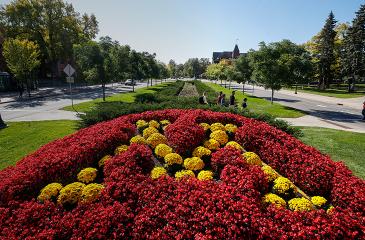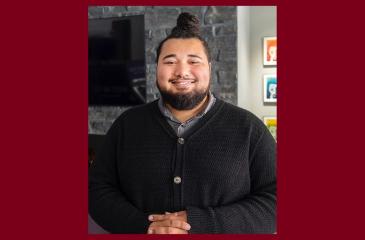A New Year, a new chance to magnify our impact by working together! The Office of Academic Clinical Affairs (OACA) was formed a year ago to do just that.
As we expand our goals for 2020, let's take a moment to reflect on our first year as a new office and the projects and collaborations that helped advance our mission to reimagine health for Minnesota by driving innovation and discovery through interprofessional care and training, and being a strong partner to the state, industry and community.
Here are our top 10 most-read stories from 2019.
10. LIFELONG COMMUNITIES: DESIGNING HOMES TO AGE AND LIVE IN PLACE
According to an AARP survey of adults age 65-plus, 87 percent want to stay in their current home and community as they age. Among people age 50 to 64, 71 percent of people want to age in place. What does this mean for community planners and homeowners? It turns out, plenty.

9. A RURAL HEALTH CARE PILOT TO ADDRESS HEALTH INEQUITY FOR MINNESOTA MIGRANT FARMWORKER FAMILIES THROUGH INTERPROFESSIONAL COMMUNITY-ENGAGEMENT
Thousands of migrant farmworkers travel to Minnesota every summer to contribute to Minnesota's agricultural workforce. Unfortunately, they experience health inequities due to pesticide exposure, poor housing, low health literacy, lack of transportation and language barriers.

8. ENGINEERING AND CLINICAL EXPERTS PARTNER TO DEVELOP SENSING DEVICE FOR EARLY DETECTION AND PREVENTION OF PRESSURE ULCERS
To help find a solution to pressure ulcers, a team of researchers from the University’s College of Science and Engineering, Medical School and School of Nursing, as well as colleagues from Fairview Health Services are working together to pilot a project that focuses on utilizing technology to facilitate health care.

7. A NEW MULTIDISCIPLINARY TEAM-BASED APPROACH TO ADDRESS COMMUNITY FOOD INSECURITY ACROSS MINNESOTA
University colleagues from public health, nursing, U-Spatial, Extension, and the Community-University Health Care Center, as well as the United Way are working together to create a new process to identify the most promising scalable and sustainable solutions that will improve food access and security, and community health and wellbeing.

6. CLOSING THE DISTANCE: THE SPIRIT OF GLOBAL PARTNERSHIP
From 2017 to 2019, the University of Minnesota partnered with Kabul University of Medical Sciences to build capacity for training the future health workforce in Afghanistan. As the project comes to a close, the interdisciplinary team reflects on the experience and their hopes for continuing partnership.

5. CULTIVATING INTEREST IN HEALTH CARE CAREERS AMONG HIGH SCHOOL STUDENTS
Fourth-year medical student, Mickey McDonough visited chemistry and anatomy classes in rural Minnesota to demonstrate suture techniques and answer questions on careers in healthcare.

4. COMMUNITY-UNIVERSITY HEALTH CARE CENTER TO CREATE INNOVATIVE SUPPORTIVE HOUSING FOR OPTIMAL HEALING
In 2018, hundreds of men, women, children, teens, the disabled, and elders camped on public property for over six months because they had no stable housing and were out of options. What was later coined the Franklin Hiawatha Encampment (or the “Wall”) became a trusted space for many, and a site for those who suffered from substance use disorder.

3. LEARNING HEALTH CARE NETWORK TO CONNECT GREATER MINNESOTA
The health disparity between rural and urban Minnesotans continues to grow. To bridge this gap, University researchers are working to develop a learning healthcare network to address the lack of access to research and education in greater Minnesota.

2. PAYING IT FORWARD: LESSONS FROM THE MINNESOTA PROJECT
The Minnesota Project lasted from 1955 to 1961. The six-year program was a partnership between the University of Minnesota and Seoul National University focused on rebuilding medical infrastructure in South Korea after the Korean War. To this day, it continues to show robust outcomes.

1. TACKLING ADOLESCENT MENTAL ILLNESS THROUGH ART
Research colleagues from the Department of Neurology, the Weisman Art Museum, and the Center for Learning Innovation at the University of Minnesota Rochester are working together to tackle the intersection of art, sleep and brain functioning in adolescents.




